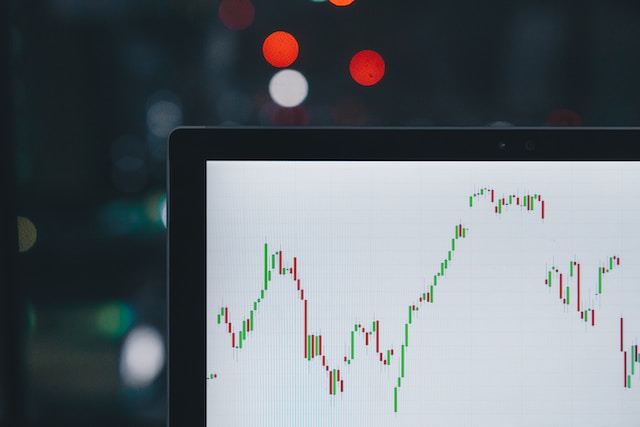
Understanding the Digital Gold Rush of Price Intelligence
In the rapidly evolving landscape of digital commerce, information represents the most valuable currency. Amazon, the global marketplace behemoth, holds a treasure trove of pricing data that can transform businesses overnight. Price scraping has emerged as a sophisticated technique for professionals seeking to decode the complex algorithms driving online retail pricing strategies.
Imagine having the ability to track product prices in real-time, understand market fluctuations, and make data-driven decisions that give you a competitive edge. This is precisely what Amazon price scraping offers – a window into the intricate world of e-commerce pricing dynamics.
The Evolution of Price Intelligence
Price scraping isn‘t just a technical exercise; it‘s a strategic approach to understanding market behavior. Over the past decade, the methodology has transformed from rudimentary manual tracking to advanced, AI-powered extraction techniques that provide unprecedented insights.
When I first started exploring web scraping in the early 2010s, the process was significantly more challenging. Developers would spend hours writing custom scripts, managing IP rotations, and battling complex website structures. Today, we have sophisticated tools and frameworks that make price extraction not just possible, but remarkably efficient.
Technical Foundations of Amazon Price Scraping
The Mechanics of Data Extraction
At its core, Amazon price scraping involves programmatically extracting pricing information from product pages. This process requires a nuanced understanding of web technologies, HTTP protocols, and HTML parsing mechanisms.
Modern scraping techniques leverage multiple technologies:
- HTTP Request Libraries: Tools like Python‘s
requestsenable sending structured web requests. - HTML Parsing: Beautiful Soup and Scrapy provide robust parsing capabilities.
- Headless Browsers: Puppeteer and Selenium allow interaction with dynamically rendered content.
A Professional-Grade Extraction Strategy
import requests
from bs4 import BeautifulSoup
import logging
class AmazonPriceScraper:
def __init__(self, user_agent, proxy=None):
self.headers = {
‘User-Agent‘: user_agent,
‘Accept-Language‘: ‘en-US,en;q=0.9‘
}
self.proxy = proxy
self.logger = logging.getLogger(__name__)
def extract_price(self, url):
try:
response = requests.get(
url,
headers=self.headers,
proxies=self.proxy,
timeout=10
)
response.raise_for_status()
soup = BeautifulSoup(response.content, ‘html.parser‘)
price_selectors = [
‘#priceblock_ourprice‘,
‘.a-price-whole‘,
‘.a-offscreen‘
]
for selector in price_selectors:
price_element = soup.select_one(selector)
if price_element:
return price_element.get_text().strip()
return None
except requests.RequestException as e:
self.logger.error(f"Extraction failed: {e}")
return NoneLegal and Ethical Considerations
Navigating the legal landscape of web scraping requires a nuanced approach. While extracting publicly available data isn‘t inherently illegal, how you collect and use that data matters significantly.
Amazon‘s Perspective
Amazon‘s terms of service explicitly discourage automated data collection. However, the legal interpretation remains complex. Key considerations include:
- Respecting robots.txt guidelines
- Avoiding excessive request rates
- Not circumventing authentication mechanisms
- Using extracted data for research, not competitive manipulation
Ethical Scraping Practices
Responsible price scraping involves:
- Implementing reasonable request intervals
- Using dedicated IP addresses
- Maintaining transparency in data usage
- Avoiding potential server overload
Advanced Implementation Techniques
Proxy Management and IP Rotation
Successful price scraping demands sophisticated IP management. Professional scrapers utilize:
- Residential proxy networks
- Rotating IP address pools
- Geographic IP distribution
- Intelligent request throttling
Handling Dynamic Content
Modern Amazon pages often use JavaScript to render content dynamically. This requires advanced techniques:
- Headless browser automation
- JavaScript rendering engines
- Complex DOM interaction strategies
Business Applications and Strategic Insights
Price scraping transcends mere data collection. It represents a strategic intelligence gathering mechanism with profound business implications:
Competitive Intelligence
- Real-time pricing trend analysis
- Competitor strategy understanding
- Dynamic pricing optimization
Market Research
- Product demand forecasting
- Seasonal pricing pattern identification
- Consumer behavior insights
Future of Price Intelligence
The future of price scraping lies in artificial intelligence and machine learning. Emerging technologies will enable:
- Predictive pricing models
- Automated market trend analysis
- Real-time competitive benchmarking
Practical Recommendations
For professionals looking to implement price scraping:
- Start with robust, well-documented libraries
- Invest in proxy infrastructure
- Develop comprehensive error handling
- Continuously refine extraction techniques
- Stay updated on legal and technological developments
Conclusion: Transforming Data into Competitive Advantage
Amazon price scraping represents more than a technical skill—it‘s a strategic approach to understanding market dynamics. By implementing ethical, sophisticated extraction methodologies, you can unlock unprecedented business insights.
The digital marketplace rewards those who understand its intricate mechanisms. Your journey into price intelligence starts now.










